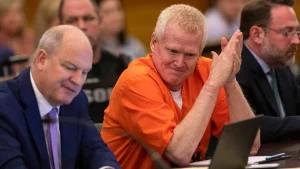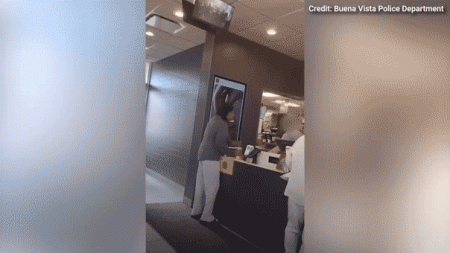Russian Forces Make Strategic Inroads into Dnipropetrovsk Region, Marking New Phase in Conflict
Moscow’s Military Achieves Symbolic Territorial Gain as War Evolves
In a significant development that has alarmed Ukrainian officials and Western observers alike, Russian forces have captured several villages in Ukraine’s Dnipropetrovsk region, marking the first time since the full-scale invasion began that Moscow’s military has established a foothold in this strategically important oblast. While modest in geographic terms, this territorial advance represents a symbolically potent achievement for the Kremlin, potentially strengthening Russia’s position in any future negotiations while demonstrating its continued capacity to open new fronts despite substantial losses elsewhere on the battlefield.
Military analysts suggest this incursion serves multiple strategic objectives beyond mere territorial acquisition. The newly captured settlements—primarily small farming communities along the region’s eastern border—provide Russian forces with improved tactical positioning and potential launching points for deeper advances toward critical Ukrainian infrastructure. Dr. Melanie Harkins, senior fellow at the Institute for Eastern European Security Studies, notes that “while these villages themselves hold limited military value, their capture disrupts Ukrainian defensive arrangements and forces Kyiv to redistribute already stretched resources.” The timing of this offensive also appears calculated, coming as Ukrainian forces face intense pressure in the Donetsk region and as Western allies debate additional aid packages.
Historical Context and Regional Significance
The Dnipropetrovsk region has long stood as a symbolic and practical bulwark against Russian territorial ambitions in Ukraine. As one of the country’s most industrialized and economically productive oblasts, it houses crucial manufacturing facilities, energy infrastructure, and transportation hubs that have remained largely functional despite more than two years of conflict. The region’s administrative center, Dnipro, Ukraine’s fourth-largest city, has served as a vital humanitarian and military logistics hub, processing displaced civilians and facilitating the movement of supplies to frontline positions further east. “Dnipropetrovsk has been Ukraine’s industrial heartland for generations,” explains regional historian Oleksandr Kovalenko. “Its factories converted to military production have been essential to Ukraine’s defense capability, making any Russian advance here particularly concerning.”
Before this development, the region had experienced frequent missile and drone strikes but had avoided the ground combat that has devastated areas like Kharkiv, Donetsk, and Zaporizhzhia. Local officials have spent months fortifying defenses along the region’s eastern boundaries, constructing elaborate trench systems and concrete fortifications that Moscow’s forces have now partially breached. Ukrainian military spokesman Colonel Andriy Shevchenko acknowledged the Russian advance but emphasized containment efforts: “We are implementing tactical repositioning of forces to strengthen our defensive lines and prepare counter-offensive operations.” International observers note that while the breakthrough remains limited, it represents the first time since March 2022 that Russia has successfully opened a new geographic direction in its campaign.
Strategic Implications and Kremlin Calculations
This territorial gain, while limited in scale, provides Moscow with additional leverage in any potential peace negotiations. The Kremlin has consistently employed a strategy of accumulating territorial control to strengthen its bargaining position, viewing each captured settlement as a chess piece on the diplomatic board. “For Russian leadership, these villages represent negotiating chips rather than military necessities,” explains Dr. Jonathan Reynolds, professor of international relations at Georgetown University. “Each new position taken, regardless of size, becomes something Ukraine must bargain to reclaim.” This approach aligns with Russia’s broader strategic patience—the willingness to accept incremental gains while absorbing significant losses in personnel and equipment.
The timing of this offensive appears deliberately calibrated to capitalize on several concurrent factors: growing war fatigue among Western populations, political transitions in key allied nations, and seasonal weather conditions favoring mechanized advances. Russian military bloggers and state media have prominently featured this breakthrough, framing it as evidence of unstoppable momentum despite Western sanctions and military aid to Ukraine. The offensive also demonstrates Moscow’s capacity to sustain multiple simultaneous operations, a capability that many analysts questioned earlier in the conflict. Ukrainian intelligence sources suggest the operation involved elements of Russia’s recently reconstituted 205th Motor Rifle Brigade, supplemented by Wagner-affiliated personnel redeployed from African operations—indicating significant resource commitment to this new front.
Humanitarian Concerns and Civilian Impact
The human cost of this new territorial incursion has been immediate and severe. According to regional Ukrainian authorities, approximately 3,700 civilians have been evacuated from the affected areas and neighboring settlements under emergency conditions. Many residents—particularly elderly individuals with limited mobility—have remained behind, creating complex humanitarian challenges that local and international organizations are scrambling to address. Dnipropetrovsk Regional Governor Valentyn Reznichenko described deteriorating conditions: “We are witnessing a familiar pattern of disrupted utilities, restricted movement, and deliberate intimidation of civilian populations in occupied areas.”
International humanitarian organizations report concerning developments in newly Russian-controlled territories, including restricted access for aid deliveries and communications blackouts that complicate monitoring efforts. “The pattern we’ve observed in other occupied regions gives us serious cause for concern about the treatment of civilians who couldn’t or wouldn’t evacuate,” stated Marta Hurtado, spokesperson for the UN Human Rights Monitoring Mission in Ukraine. Satellite imagery analyzed by independent monitoring groups indicates significant damage to civilian infrastructure, including schools, medical facilities, and apartment buildings, consistent with artillery bombardment preceding the Russian advance. Ukrainian officials have accused Russian forces of implementing immediate administrative changes in captured areas, including currency substitution, educational system modifications, and telecommunications rerouting—further evidence of Moscow’s intention to establish permanent control.
International Reactions and Policy Implications
The international response to Russia’s new territorial gain has followed predictable patterns while revealing evolving nuances in global positioning. Western allies have issued strong condemnations, with US Secretary of State Anthony Blinken characterizing the advance as “further evidence of Russia’s disregard for Ukrainian sovereignty and territorial integrity.” NATO Secretary-General Mark Rutte convened an emergency consultation with alliance members, resulting in pledges of accelerated ammunition deliveries and enhanced intelligence sharing. European Union foreign policy chief Josep Borrell announced preparations for a new sanctions package targeting Russian military production capabilities and logistical networks supporting frontline operations.
However, diplomatic observers note subtle shifts in the international landscape surrounding the conflict. Several Global South nations that previously maintained studied neutrality have expressed heightened concern about the conflict’s expansion, with Brazilian President Luiz Inácio Lula da Silva calling for renewed peace negotiations and India’s foreign ministry urging “all parties to return to dialogue.” China’s response has been particularly scrutinized, with Beijing offering a carefully calibrated statement emphasizing “respect for all nations’ territorial integrity” while avoiding direct criticism of Russian actions. Military analysts suggest this latest development will intensify debates within NATO regarding limitations on Ukrainian use of Western-supplied weapons, particularly the potential authorization to strike targets deeper inside Russian territory that may be supporting operations in Dnipropetrovsk. As one senior European defense official noted on condition of anonymity, “This incursion fundamentally changes the risk calculation. If Russia can open new fronts at will, we may need to reconsider certain operational restrictions.”
As Ukrainian forces mobilize to counter this new threat, the coming weeks will likely determine whether Russia’s advance into Dnipropetrovsk represents a temporary incursion or the beginning of a significant new phase in a conflict that continues to reshape European security architecture and global diplomatic alignments. What remains clear is that Moscow’s capture of these villages—however modest in geographic terms—carries outsized strategic and symbolic significance that will reverberate through military planning rooms and diplomatic chambers far beyond Ukraine’s borders.










